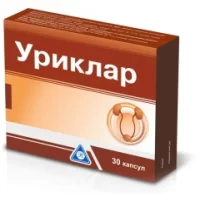$9.00
Manufacturer: Poland
Purpose: Inhibits prostaglandin synthesis for pain relief, targeting local inflammation.
Description
Ultrafastin (ketoprofen) gel 2.5% 30 g. tube
Ingredients
Active ingredient: Ketoprofen 2.5%
Other ingredients: Carbomer, diisopropanolamine, ethyl alcohol, lavender fragrance, purified water.
Dosage
Apply a thin layer of Ultrafastin gel to the affected area 2-3 times a day. Rub gently until absorbed. Wash hands after application.
Indications
Ultrafastin gel is indicated for the relief of pain and inflammation in conditions such as: arthritis, sprains, strains, and sports injuries.
Contraindications
Do not use Ultrafastin gel if you are allergic to ketoprofen or other NSAIDs. Avoid use on broken or irritated skin, near the eyes, or mucous membranes.
Directions
For external use only. Clean and dry the affected area before applying the gel. Do not bandage or wrap the area after application.
Scientific Evidence
Ketoprofen, the active ingredient in Ultrafastin gel, is a nonsteroidal anti-inflammatory drug (NSAID) known for its analgesic and anti-inflammatory properties. Studies have shown that topical ketoprofen formulations can provide effective pain relief with minimal systemic side effects compared to oral NSAIDs.
Clinical trials have demonstrated the efficacy of ketoprofen gel in reducing pain and improving function in patients with osteoarthritis and other musculoskeletal conditions. The gel formulation allows for targeted delivery of the medication to the site of pain, enhancing its therapeutic effects.
Additional Information
- Ultrafastin gel should not be used in combination with other topical products or medications without consulting a healthcare provider.
- If skin irritation or rash develops, discontinue use and consult a physician.







Recent Reviews